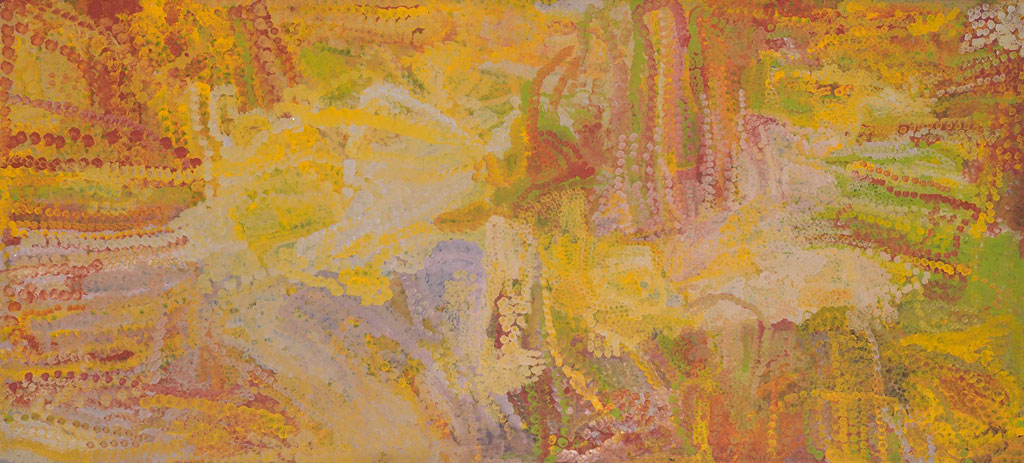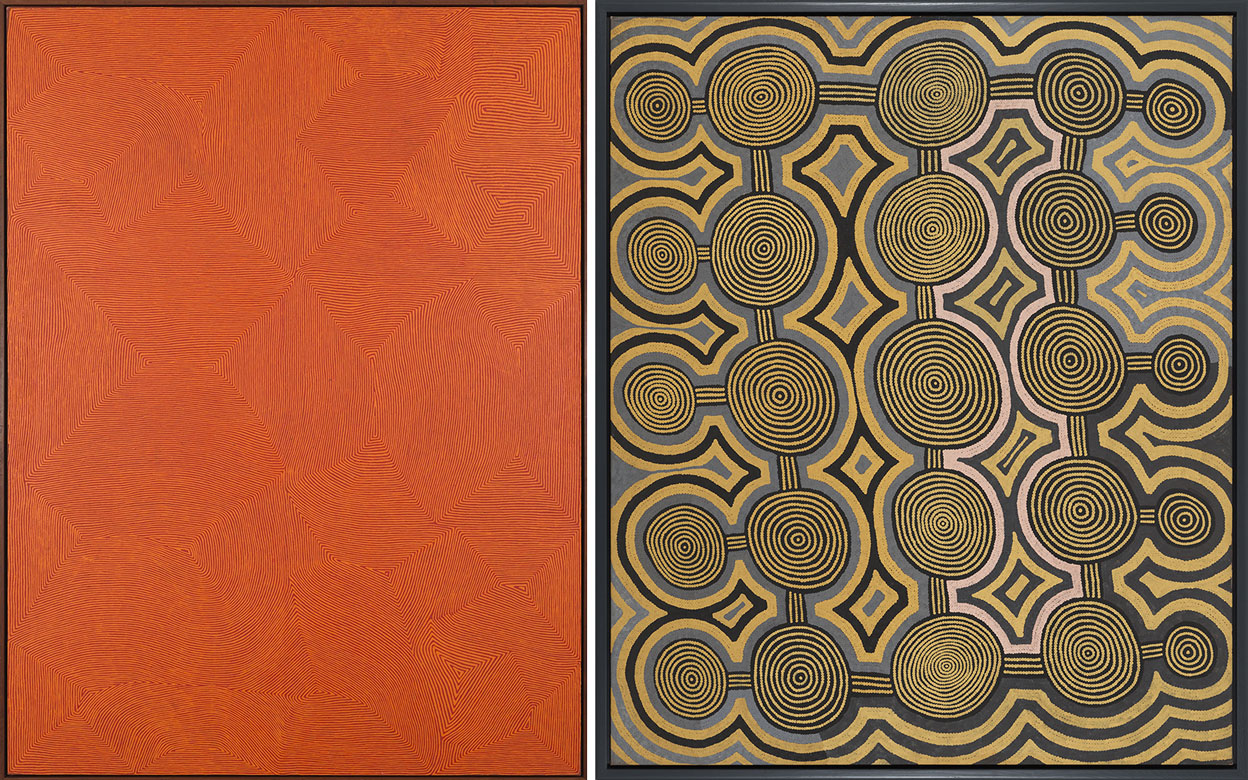ART-PRESENTATION: Desert Painters of Australia Part II

Australia has a tradition of Indigenous Art which is thousands of years old, the best known forms being Rock Art and Bark Painting. Evidence of Indigenous Art in Australia can be traced back at least 30,000 years. In the late 1960s, the Australian government moved several communities from the Western Desert region (primarily Pintupi, Luritja, Warlpiri, and Arrernte peoples) to the Papunya settlement, about 150 miles south of Alice Springs in the Northern Territory.
By Dimitris Lempesis
Photo: Gagosian Archive
Indigenous Australians, linked to the forced displacement in the late 1960s of communities such as the Pintupi, Luritja, Warlpiri, and Arrernte peoples to the Papunya settlement in the Northern Territory, for them the past is understood to be part of a cyclical and circular order known as the “Everywhen”, conceptions of time rely on active encounters with both the ancestral and natural worlds. Indigenous Art has roots in a culture that is thousands of years old, but it didn’t begin to take its prevailing present shape, colored paints on canvas until the early 1970s. That’s when Geoffrey Bardon, a white schoolteacher, encouraged senior Indigenous men to paint designs they had shown him onto small pieces of hardboard, using cheap but colorful acrylic paint. This occurred at a remote government settlement in the Northern Territory called Papunya. The exhibition “Desert Painters of Australia Part II” with paintings by three generations of leading artists from the distinguished collection of Steve Martin and Anne Stringfield, is one of the time that the work of Indigenous Australian artists is shown in Los Angeles. While their predecessors made use of traditional symbols and ideograms, the Papunya Tula artists worked to sublimate overt references in order to protect sacred designs. For the most part, male and female artists developed divergent stylistic approaches: men were entrusted with perpetuating traditional patterns and forms rich in optical geometries while women were free to pursue more expressionistic interpretations of common narratives, as in Yukultji Napangati’s “Yunula” (2009), a deeply rhythmic painting whose compressed tonal strokes evoke a shimmering terrain west of the Kiwirrkurka community. Bill Whiskey Tjapaltjarri’s series “Rockholes and Country near the Olgas” (2007) uses dots and contoured lines to chart a vivid topography of the rocks and hills around the mythic Olgas in Central Australia. Three separate but related paintings reveal an exploratory palette, from aqueous blues and greens to hot yellows and ochers. Willy Tjungurrayi’s “Untitled” (2001) exemplifies a different dotting technique in which a hailstorm is rendered as a myriad of tiny pale spots, pulsating with energy to suggest the effects of weather on a parched landscape. These works, along with other geographically specific subjects by Naata Nungurrayi and Makinti Napanangka, demonstrate multivalent approaches to depicting sacred or historical sites, whereby the real world is mapped alongside the conceptual, liminal realms of dreams and memory.
Info: Gagosian Gallery, 456 North Camden Drive, Beverly Hills, Duration: 26/7-6/9/19, Days & Hours: Mon-Fri 10:00-18:00, https://gagosian.com






